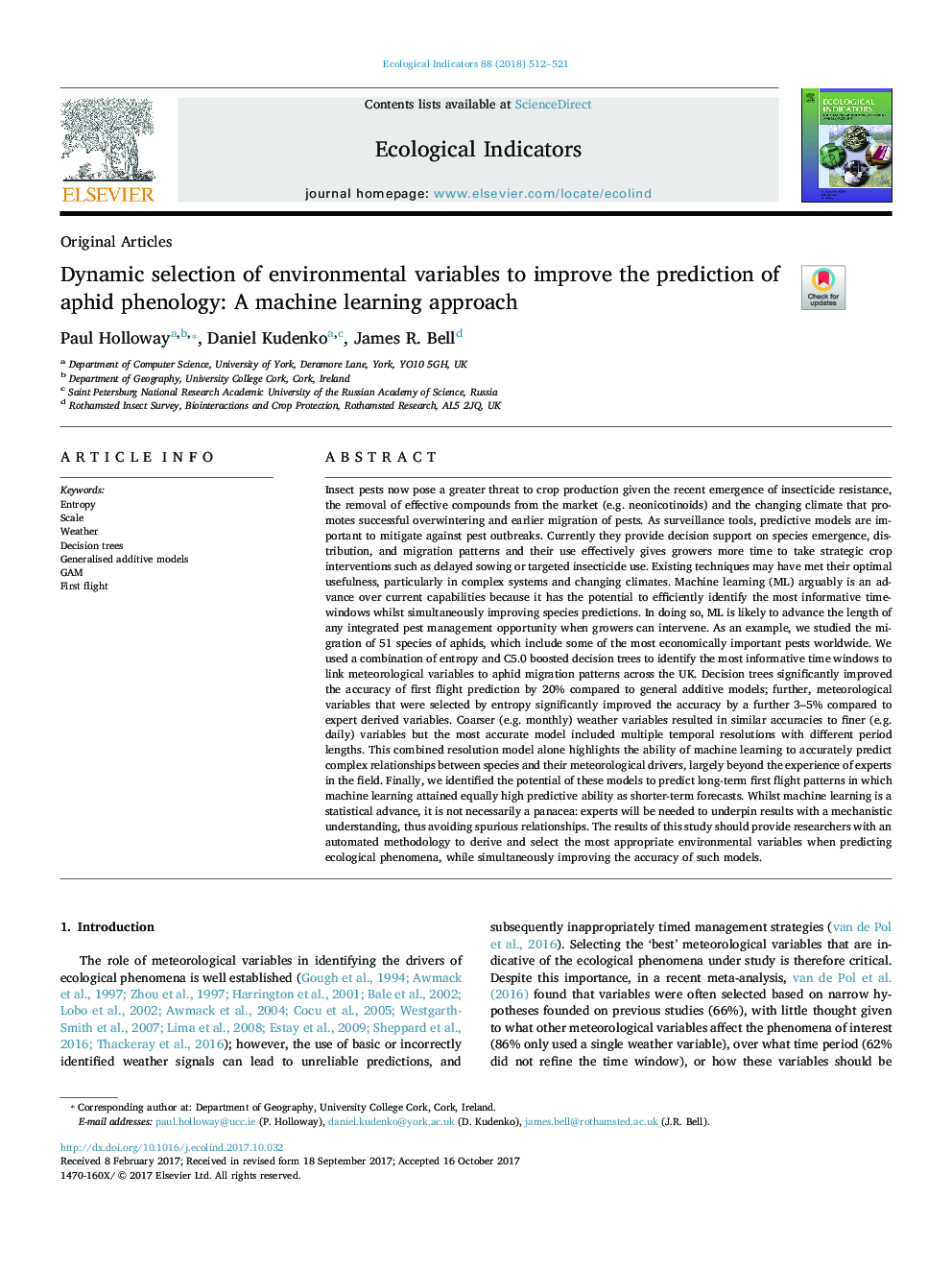| کد مقاله | کد نشریه | سال انتشار | مقاله انگلیسی | نسخه تمام متن |
|---|---|---|---|---|
| 8845647 | 1617114 | 2018 | 10 صفحه PDF | دانلود رایگان |
عنوان انگلیسی مقاله ISI
Dynamic selection of environmental variables to improve the prediction of aphid phenology: A machine learning approach
ترجمه فارسی عنوان
انتخاب پویا از متغیرهای محیطی برای پیش بینی فنولوژی شته: یک روش یادگیری ماشین
دانلود مقاله + سفارش ترجمه
دانلود مقاله ISI انگلیسی
رایگان برای ایرانیان
کلمات کلیدی
موضوعات مرتبط
علوم زیستی و بیوفناوری
علوم کشاورزی و بیولوژیک
بوم شناسی، تکامل، رفتار و سامانه شناسی
چکیده انگلیسی
Insect pests now pose a greater threat to crop production given the recent emergence of insecticide resistance, the removal of effective compounds from the market (e.g. neonicotinoids) and the changing climate that promotes successful overwintering and earlier migration of pests. As surveillance tools, predictive models are important to mitigate against pest outbreaks. Currently they provide decision support on species emergence, distribution, and migration patterns and their use effectively gives growers more time to take strategic crop interventions such as delayed sowing or targeted insecticide use. Existing techniques may have met their optimal usefulness, particularly in complex systems and changing climates. Machine learning (ML) arguably is an advance over current capabilities because it has the potential to efficiently identify the most informative time-windows whilst simultaneously improving species predictions. In doing so, ML is likely to advance the length of any integrated pest management opportunity when growers can intervene. As an example, we studied the migration of 51 species of aphids, which include some of the most economically important pests worldwide. We used a combination of entropy and C5.0 boosted decision trees to identify the most informative time windows to link meteorological variables to aphid migration patterns across the UK. Decision trees significantly improved the accuracy of first flight prediction by 20% compared to general additive models; further, meteorological variables that were selected by entropy significantly improved the accuracy by a further 3-5% compared to expert derived variables. Coarser (e.g. monthly) weather variables resulted in similar accuracies to finer (e.g. daily) variables but the most accurate model included multiple temporal resolutions with different period lengths. This combined resolution model alone highlights the ability of machine learning to accurately predict complex relationships between species and their meteorological drivers, largely beyond the experience of experts in the field. Finally, we identified the potential of these models to predict long-term first flight patterns in which machine learning attained equally high predictive ability as shorter-term forecasts. Whilst machine learning is a statistical advance, it is not necessarily a panacea: experts will be needed to underpin results with a mechanistic understanding, thus avoiding spurious relationships. The results of this study should provide researchers with an automated methodology to derive and select the most appropriate environmental variables when predicting ecological phenomena, while simultaneously improving the accuracy of such models.
ناشر
Database: Elsevier - ScienceDirect (ساینس دایرکت)
Journal: Ecological Indicators - Volume 88, May 2018, Pages 512-521
Journal: Ecological Indicators - Volume 88, May 2018, Pages 512-521
نویسندگان
Paul Holloway, Daniel Kudenko, James R. Bell,
